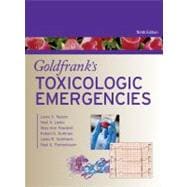
Neal A. Lewin, MD, FACP, FACEP, FACMT, Director of Didactic Education NYULMC/Bellevue Emergency Medicine Residency Program, The Stanley and Fiona Druckenmiller Professor of Emergency Medicine and Medicine (Pharmacology), Bellevue Hospital Center and New York University Medical Center; Clinical Associate Professor of Emergency Medicine and Medicine (Clinical Pharmacology), New York University School of Medicine; Consultant, New York City Poison Center, New York, New York.
Mary Ann Howland, PharmD, DABAT, FAACT, Clinical Professor of Pharmacy, St. John’s University College of Pharmacy; Consultant, Department of Emergency Medicine, Bellevue Hospital Center and New York University Medical Center; Senior Consultant in Residence, New York City Poison Center, New York, New York.
Robert S. Hoffman, MD, FAACT, FACMT, Director, New York City Poison Center; Attending Physician, Department of Emergency Medicine, Bellevue Hospital Center and New York University Medical Center; Associate Professor, Emergency Medicine and Medicine (Clinical Pharmacology), New York University School of Medicine, New York, New York.
Lewis R. Goldfrank, MD, FACEP, FAAEM, FAACT, FACMT, FACP, Professor and Chair, Department of Emergency Medicine, New York University School of Medicine; Director, Emergency Medicine, Bellevue Hospital Center and New York University Medical Center; Medical Director, New York City Poison Center, New York, New York.
Neal E. Flomenbaum, MD, FACP, FACEP, Emergency Physician-in-Chief, New York Presbyterian Hospital; Professor of Clinical Medicine, Weill Medical College, Cornell University; Consultant, New York City Poison Center, New York, New York.
The New copy of this book will include any supplemental materials advertised. Please check the title of the book to determine if it should include any access cards, study guides, lab manuals, CDs, etc.
The Used, Rental and eBook copies of this book are not guaranteed to include any supplemental materials. Typically, only the book itself is included. This is true even if the title states it includes any access cards, study guides, lab manuals, CDs, etc.